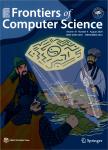Evaluating the usage of fault localization in automated program repair:an empirical study
作者机构:College of ComputerNational University of Defense TechnologyChangsha 410073China Laboratory of Software Engineering for Complex SystemsChangsha 410073China Beijing Institute of Tracking and Communication TechnologyBeijing 100094China School of Big Data&Software EngineeringChongqing UniversityChongqing 400044China
出 版 物:《Frontiers of Computer Science》 (中国计算机科学前沿(英文版))
年 卷 期:2021年第15卷第1期
页 面:53-67页
核心收录:
学科分类:0810[工学-信息与通信工程] 0808[工学-电气工程] 08[工学] 0835[工学-软件工程] 0701[理学-数学] 0812[工学-计算机科学与技术(可授工学、理学学位)] 081202[工学-计算机软件与理论]
基 金:This research was supported in part by the National Natural Science Foundation of China(Grant Nos.61672529,61379054,61602504,61502015) the Fundamental Research Funds for the Central Universities(2019CDXYRJ0011) National Defense Science Foundation of China(3001010)
主 题:automated program repair fault localization empirical study
摘 要:Fault localization techniques are originally proposed to assist in manual debugging by generally producing a rank list of suspicious *** the increasing popularity of automated program repair,the fault localization techniques have been introduced to effectively reduce the search space of automated program *** developers who mainly focus on the rank information,current automated program repair has two strategies to use the fault localization information:suspiciousness-first algorithm(SFA)based on the suspiciousness accuracy and rank-first algorithm(RFA)relying on the rank ***,despite the fact that the two different usages are widely adopted by current automated program repair and may result in different repair results,little is known about the impacts of the two strategies on automated program *** this paper we empirically compare the performance of SFA and RFA in the context of automated program ***,we implement the two strategies and six well-studied fault localization techniques into four state-of-the-art automated program repair tools,and then use these tools to perform repair experiments on 60 real-world bugs from *** study presents a number of interesting findings:RFA outperforms SFA in 70.02%of cases when measured by the number of candidate patches generated before a valid patch is found(NCP),while SFA performs better in parallel repair and patch diversity;the performance of SFA can be improved by increasing the suspiciousness accuracy of fault localization techniques;finally,we use SimFix that deploys SFA to successfully repair four extra Defects4J bugs which cannot be repaired by SimFix originally using *** observations provide a new perspective for future research on the usage and improvement of fault localization in automated program repair.



